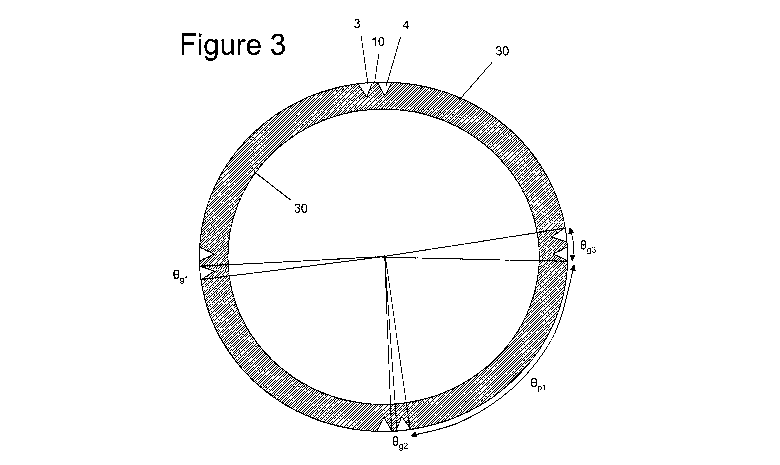Some of the information on this Web page has been provided by external sources. The Government of Canada is not responsible for the accuracy, reliability or currency of the information supplied by external sources. Users wishing to rely upon this information should consult directly with the source of the information. Content provided by external sources is not subject to official languages, privacy and accessibility requirements.
Any discrepancies in the text and image of the Claims and Abstract are due to differing posting times. Text of the Claims and Abstract are posted:
| (12) Patent Application: | (11) CA 2757111 |
|---|---|
| (54) English Title: | EXPLOSIVE CHARGE |
| (54) French Title: | CHARGE EXPLOSIVE |
| Status: | Deemed Abandoned and Beyond the Period of Reinstatement - Pending Response to Notice of Disregarded Communication |
| (51) International Patent Classification (IPC): |
|
|---|---|
| (72) Inventors : |
|
| (73) Owners : |
|
| (71) Applicants : |
|
| (74) Agent: | MBM INTELLECTUAL PROPERTY AGENCY |
| (74) Associate agent: | |
| (45) Issued: | |
| (86) PCT Filing Date: | 2010-03-26 |
| (87) Open to Public Inspection: | 2010-10-07 |
| Availability of licence: | N/A |
| Dedicated to the Public: | N/A |
| (25) Language of filing: | English |
| Patent Cooperation Treaty (PCT): | Yes |
|---|---|
| (86) PCT Filing Number: | PCT/GB2010/050514 |
| (87) International Publication Number: | WO 2010112900 |
| (85) National Entry: | 2011-09-29 |
| (30) Application Priority Data: | ||||||
|---|---|---|---|---|---|---|
|
An explosive charge (1) comprising an elongate casing (2) with elongate
grooves (3,4) miming along the casing,
each groove locally reducing the thickness of the casing. The grooves are
distributed in two or more groups around the circumference
of the casing and the edge-to-edge spacing between each adjacent pair of
grooves in a group is less than the edge-to-edge
spacing between each pair of adjacent groups. Detonation causes the casing to
break at a pair of grooves in one of the groups and
form a fragment from material between the pair of grooves, the fragment
cutting an obstacle (28).
L'invention concerne une charge explosive (1) comprenant une douille allongée (2) présentant sur sa longueur des rainures allongées (3, 4), chaque rainure réduisant localement l'épaisseur de la douille. Les rainures sont réparties en deux groupes ou plus autour de la circonférence de la douille, et l'espacement bord à bord entre chaque paire adjacente de rainures dans un groupe est inférieur à l'espacement bord à bord entre chaque paire de groupes adjacents. La détonation entraîne la rupture de la douille au niveau d'une paire de rainures dans l'un des groupes et forme un fragment de matière entre la paire de rainures, le fragment coupant un obstacle (28).
Note: Claims are shown in the official language in which they were submitted.
Note: Descriptions are shown in the official language in which they were submitted.

2024-08-01:As part of the Next Generation Patents (NGP) transition, the Canadian Patents Database (CPD) now contains a more detailed Event History, which replicates the Event Log of our new back-office solution.
Please note that "Inactive:" events refers to events no longer in use in our new back-office solution.
For a clearer understanding of the status of the application/patent presented on this page, the site Disclaimer , as well as the definitions for Patent , Event History , Maintenance Fee and Payment History should be consulted.
| Description | Date |
|---|---|
| Time Limit for Reversal Expired | 2015-03-26 |
| Application Not Reinstated by Deadline | 2015-03-26 |
| Deemed Abandoned - Failure to Respond to Maintenance Fee Notice | 2014-03-26 |
| Inactive: Reply to s.37 Rules - PCT | 2012-01-06 |
| Inactive: Cover page published | 2011-11-29 |
| Inactive: IPC assigned | 2011-11-17 |
| Inactive: Request under s.37 Rules - PCT | 2011-11-17 |
| Inactive: Notice - National entry - No RFE | 2011-11-17 |
| Application Received - PCT | 2011-11-17 |
| Inactive: First IPC assigned | 2011-11-17 |
| Inactive: IPC assigned | 2011-11-17 |
| Inactive: IPC assigned | 2011-11-17 |
| National Entry Requirements Determined Compliant | 2011-09-29 |
| Application Published (Open to Public Inspection) | 2010-10-07 |
| Abandonment Date | Reason | Reinstatement Date |
|---|---|---|
| 2014-03-26 |
The last payment was received on 2013-03-13
Note : If the full payment has not been received on or before the date indicated, a further fee may be required which may be one of the following
Please refer to the CIPO Patent Fees web page to see all current fee amounts.
| Fee Type | Anniversary Year | Due Date | Paid Date |
|---|---|---|---|
| Basic national fee - standard | 2011-09-29 | ||
| MF (application, 2nd anniv.) - standard | 02 | 2012-03-26 | 2011-09-29 |
| MF (application, 3rd anniv.) - standard | 03 | 2013-03-26 | 2013-03-13 |
Note: Records showing the ownership history in alphabetical order.
| Current Owners on Record |
|---|
| CHEMRING ENERGETICS UK LIMITED |
| Past Owners on Record |
|---|
| COLIN DOUGLAS YOUNG |